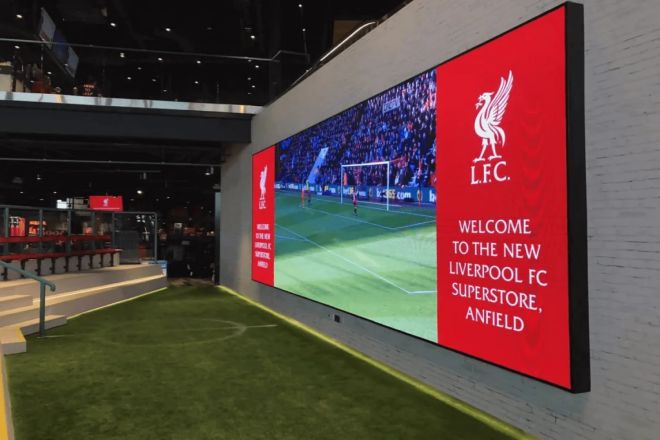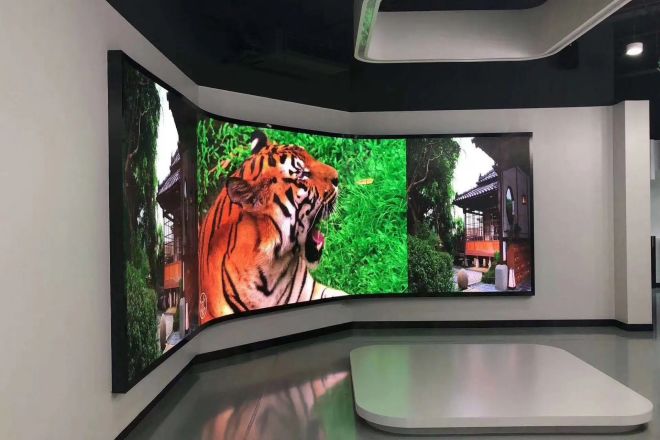Introduction

With the rapid development of science and technology, indoor LED display screens have become an indispensable part of the modern indoor environment. Whether in commercial display, advertising, conference reports, or theatrical performances, indoor LED display screens play a vital role.
However, for users and investors, the life of indoor LED display screens is directly related to their return on investment and user experience. Therefore, exploring the secret of the “longevity” of indoor LED display screens is not only of great significance for improving product quality and extending service life but also can bring tangible economic benefits and convenience to users.
1. Introduction to indoor LED display screens
- Indoor LED display screens: efficient and low-consumption indoor visual tools
Indoor LED display screens are a modern and efficient display device. With its unique optoelectronic characteristics, it occupies an important position in the field of indoor display. The core structure of this display screen is countless tiny LED dots, which are like twinkling stars in the night sky, converging into a brilliant sea of stars, bringing us a clear and vivid visual experience.
These LED dots are regulated by a sophisticated electronic control system, which can achieve fine adjustment of brightness and color. This means that whether you want to present a colorful picture or just need a monochrome high-brightness display, indoor LED displays can easily do the job. Through precise brightness control, the content on the display can remain clear and visible even in strong light environments without blurring or reduced visibility.
Indoor LED displays are widely used in many fields, such as business, education, and entertainment. On commercial occasions, it can be used as billboards, bulletin boards, etc., to display various product information, promotional activities, etc., to attract customers’ attention and increase brand awareness and reputation.
In the field of education, it can be used to display teaching content, scientific experiments, etc., to provide teachers and students with richer and more vivid teaching resources. In the field of entertainment, indoor LED displays are even more indispensable equipment. It can be used as the background wall for concerts, parties, and other activities to create a shocking visual effect and bring a more immersive viewing experience to the audience.
In addition to a wide range of applications, indoor LED displays have many other advantages. First, its brightness is high, and it can maintain a clear and bright display even in a dark indoor environment. Secondly, its color reproduction is high, which can present a more realistic and natural color effect. In addition, indoor LED display screens also have the advantages of energy saving and environmental protection, which are more energy-saving and low-consumption than traditional display devices.
The normal service life of indoor LED display screens is about 60,000 hours, but the specific service life will be affected by many factors such as LED lamp bead type, use environment, driving current, and maintenance. Under normal use conditions, by appropriately reducing its brightness, selecting suitable LED lamp beads, and maintaining good use habits, its service life can be effectively extended.
2. Key factors for the longevity of indoor LED display screens

1). High-quality LED chips
- Characteristics of high-quality LED chips:
High brightness, bright colors, and good stability.
A constant current drive ensures that the LED’s brightness is constant during operation and reduces flickering.
High temperature resistance and anti-aging can work stably for a long time in harsh environments.
- The importance of choosing high-quality LED chips:
High-quality LED chips are the basis for the stable operation of the display screen, which can ensure that the display screen still maintains high brightness, high definition, and bright colors during long-term use.
Poor-quality LED chips are prone to cause dead spots and abnormal points on the display screen, which seriously affect the life and display effect of the display screen.
- The impact of LED chip life on the overall life of the display screen:
The life of the LED chip directly affects the overall life of the display screen. Generally speaking, the longer the life of the LED chip, the longer the life of the display.
2). Reasonable heat dissipation design
- The harm of poor heat dissipation to LED display:
Poor heat dissipation will cause the internal temperature of the LED display to rise, which will accelerate the aging process of the LED chip and shorten the life of the display.
The high temperature will also affect the display effect and stability of the display, resulting in image distortion, color deviation, and other problems.
- Principles and methods of heat dissipation design:
Principle: Reduce the internal temperature of the LED display by increasing the heat dissipation area and improving the heat dissipation efficiency.
Method: Use fan heat dissipation, aluminum heat dissipation fins, heat conduction heat dissipation, heat conduction pipe heat dissipation, and other heat dissipation methods to ensure that the internal temperature of the display is always kept within the appropriate range.
- Application of efficient heat dissipation materials:
The use of heat-dissipation materials with high thermal conductivity, such as graphene, carbon composite paper, etc., can further improve the heat dissipation efficiency and extend the service life of the display.
3). Stable power supply
- The impact of power supply on the stability of LED display:
The stable power supply is an important guarantee for the normal operation of LED displays. Excessive or unstable power fluctuations will cause flickering and uneven brightness of the display and even damage the display in severe cases.
- Functions and effects of the power management system:
The power management system can monitor the power status in real-time, automatically adjust the power output, and ensure that the display screen works under a stable power supply. At the same time, the power management system also has protection functions such as overcurrent, overvoltage, and overtemperature, which can effectively prevent the display screen from being damaged due to power problems.
4). Advanced control system
- The impact of the control system on the performance of the LED display screen:
The advanced control system can achieve precise control of the LED display screen, ensuring that the display screen is bright in color, uniform in brightness, and stable during the display process. At the same time, the control system can also adjust parameters such as brightness and color as needed to meet the needs of different occasions.
- Update and maintenance of the control system software:
The update and maintenance of the control system software is the key to ensuring the stable performance of the display screen. By regularly updating the software, potential problems and vulnerabilities can be fixed and the performance and stability of the display screen can be improved.
At the same time, regular maintenance and inspection of the control system can help discover and solve problems in a timely manner and ensure the long-term use of the display screen.
5). High-quality installation and maintenance
- The impact of the installation environment on the life of the indoor LED display screen:
The installation environment has a great impact on the life of the display screen. A good installation environment can reduce the damage to the display screen caused by factors such as dust and moisture, and extend the service life of the display screen.
- Correct installation methods and steps:
During the installation process, it is necessary to follow the correct installation methods and steps to ensure that the display can be firmly installed in the designated location to avoid problems caused by improper installation.
- The importance of daily maintenance and care:
Daily maintenance and care are the keys to ensuring the long-term and stable operation of the display. Regular cleaning, inspection and maintenance of the display can timely discover and solve problems and prevent problems from expanding. At the same time, reasonable usage habits can also reduce the loss and failure rate of the display.
3. Practical methods to extend the life of indoor LED display screens

1). Choose reputable brands and suppliers
When purchasing indoor LED display screens, it is crucial to choose a reputable brand and supplier. Here are some selection criteria:
Brand reputation: Choose a brand that has a good reputation and is widely recognized in the market.
Product quality: Examine the quality of products provided by suppliers, including the quality of key components such as LED chips, control systems, and heat dissipation designs.
Production capacity and quality control system: Ensure that the supplier has sufficient production capacity and a strict quality control system to ensure product quality.
2). Customize the display screen according to the use environment
Different use environments have different requirements for LED display screens. In order to extend the life of the display, it is necessary to customize the display according to the actual use environment:
Analyze the special requirements of the use environment, such as the impact of temperature, humidity, dust, and other factors on the display.
According to these requirements, customize the heat dissipation design and dust prevention measures of the display to ensure that the display can work stably in a specific environment.
3). Reasonable use and operation of the display
Correct use and operation methods are crucial to extending the life of the LED display:
Follow the instruction manual to operate and understand the various functions and operation requirements of the display.
Avoid excessive use and improper operation, such as long-term high-brightness display, frequent power on and off, etc., which will have a negative impact on the life of the display.
4). Regular maintenance and care of the display
Regular maintenance and care are the keys to ensuring the long-term and stable operation of the LED display:
Develop a maintenance and care plan, including regular cleaning, checking the heat dissipation system, tightening screws, etc.
Regularly check the key components of the display such as the power supply and control system to ensure that they are working properly.
Promptly discover and deal with potential problems, such as LED chip damage and control system failure, to avoid the expansion of problems.
In addition, some additional measures can be taken to extend the life of the display, such as using efficient heat dissipation materials and installing a temperature monitoring system. These measures can further improve the stability and reliability of the display and extend its service life.
Conclusion
In summary, the longevity of indoor LED displays is not accidental but requires the combined effect of many factors. From selecting high-quality LED chips, reasonable heat dissipation design, stable power supply, and advanced control system to high-quality installation and maintenance, every link is crucial.
By carefully selecting brands and suppliers, customizing displays suitable for the use environment, reasonably using and operating displays, and regularly maintaining and servicing displays, we can effectively extend the service life of LED displays and improve return on investment and user experience.
Finally, if you want to know more about LED displays, please get in touch with us.
